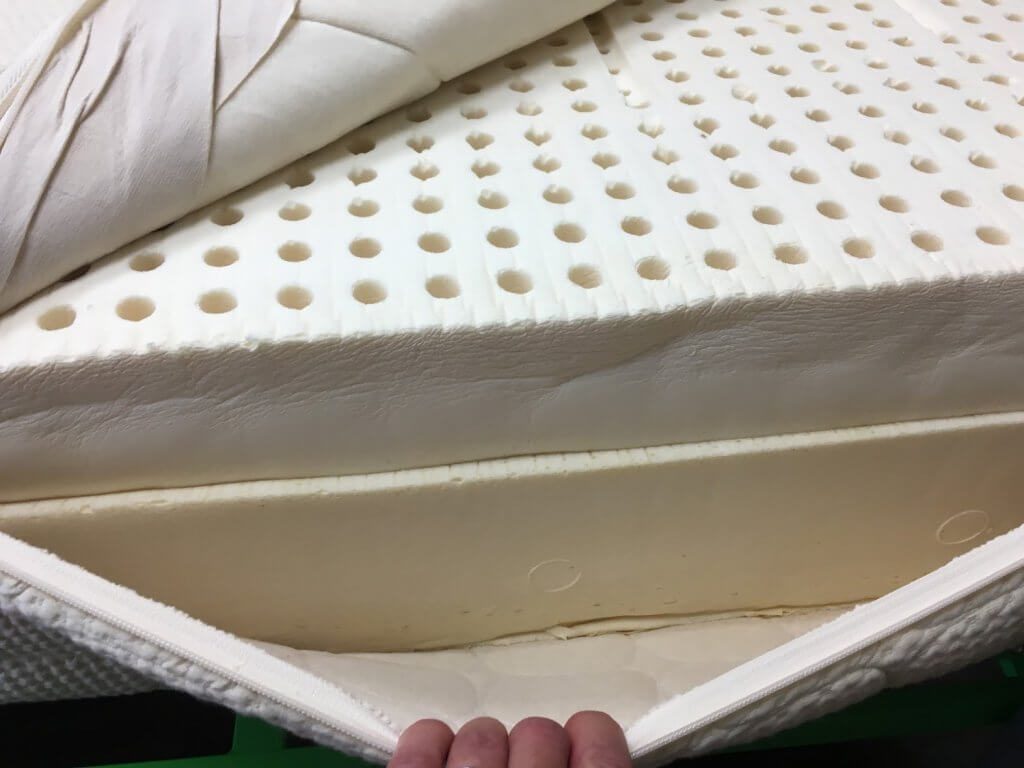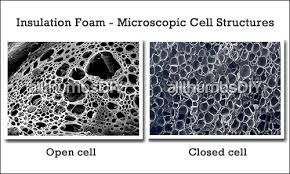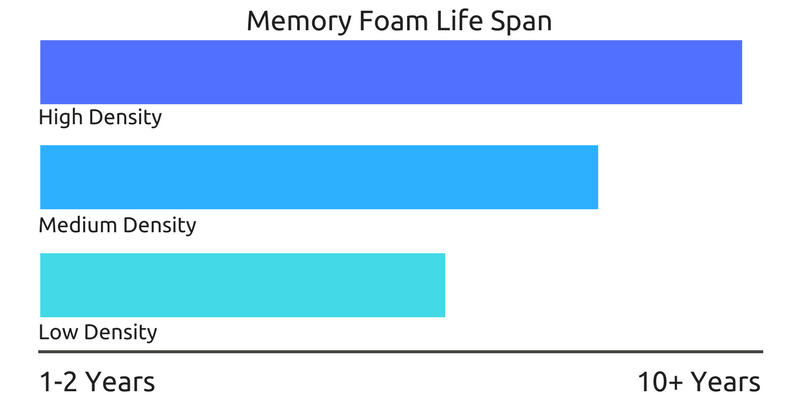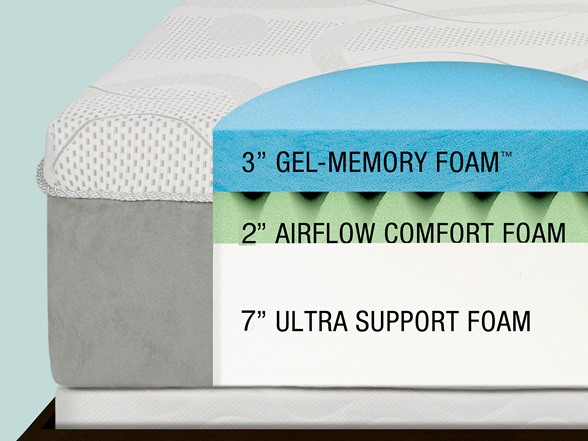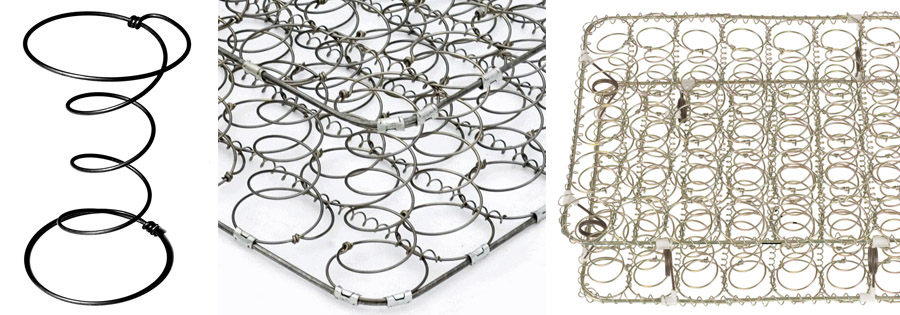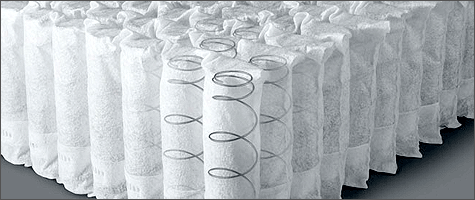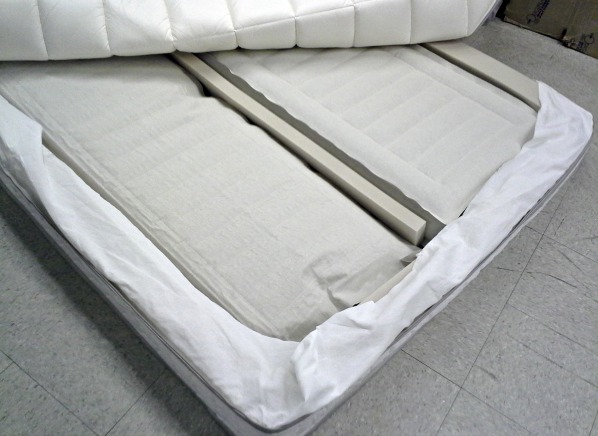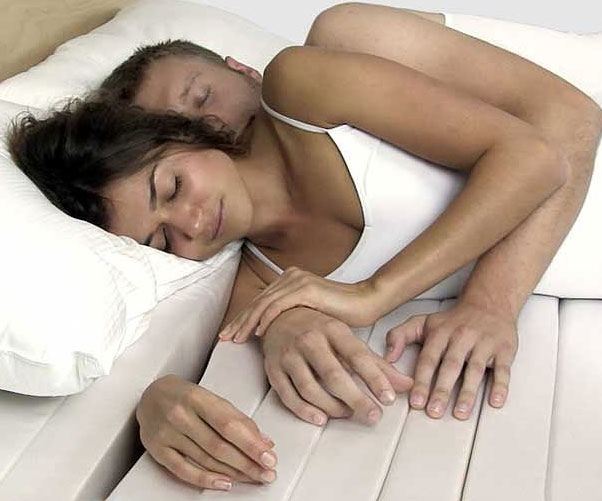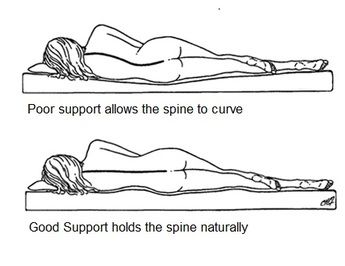 Loading... Please wait...
Loading... Please wait...- CALL US ON 925-984-3105
- My Account
- Gift Certificates
- Items / $0.00
Categories
How to Choose a Mattress: The No-Fluff (Pun Intended) Mattress Buying Guide
Posted by Katie Taylor on 11th Sep 2019
I think you’ll agree with me when I say…
Shopping for a new mattress sucks.
There are half a dozen types of mattresses, each with their own nuances like size, material, firmness, and more.
Not to mention the dozens of retailers offering different prices and hundreds of brands claiming to be the best.
We get it – that’s why we created this mattress buying guide. In it, you’ll learn exactly how to choose a mattress that’s perfect specifically for YOU.
(And how to avoid wasting thousands of dollars on something that isn’t right for you.)
Here’s a quick index to jump to the section you care about:
- Do you need a new mattress?
- Which type of mattress is best for you?
- Choosing a Mattress Retailer
- Mattress buying tips
- Best mattresses for side sleepers
- Best mattresses for back pain
Let’s get started!
Do you need a new mattress?
Buying a mattress is a stressful undertaking. Good beds can cost thousands of dollars; and every mattress seller claims theirs is the best.
So do you even need a new mattress?
Here’s how to tell. You should think about getting a new mattress if…
- Your mattress is over 8 years old. Over time, mattresses degrade, sag, and lose their support. Not all mattresses need to be replaced after 8 years, but it’s a good rule of thumb. More info on how long the different types of mattresses last in the next section.
- You sleep better whenever you’re away from home. If you sleep like a baby whenever you go out to a hotel or a friends house, it could be a sign that you need a new bed. Although, you could also just sleep better when you’re out!
- You feel restless, wake up in pain, or can’t sleep throughout the night. All three of these are symptoms of a poor mattress. Many people look for a mattress buying guide due to back pain, so it’s a definite warning sign.
So you’re still reading? I’m sorry for your pain! But hopefully, this guide can at least help ease the pain of choosing which mattress to buy.
Let’s start with the types of mattresses.
Which type of mattress is best for you?
There are five main “flavors” of mattress:
- Latex
- Memory Foam
- Coils
- Pillow Top
- Adjustable
There are also blends of mattresses which are very popular right now, such as latex or memory foam on top of coils.
Note: There is no true “best type of mattress”. There are multiple types because different people like different things.
To help you select a mattress that’s right for YOUR body, here are the pros and cons of each type and some advice on who they’re a good fit for:
1. Latex
There are actually three types of latex mattresses to choose from:
- Natural
- Blended
- Synthetic
While the highest quality latex mattresses are often made with 100% latex, many latex mattresses in retail stores have latex on top and polyurethane on the bottom.
The insides look like this:
We also want to point out that each of these mattresses are 100% safe to sleep on, despite being made/processed differently. Without further ado, let’s dive in!
Natural Latex Mattresses
Natural latex mattresses are becoming more and more popular, mainly because they’re made with chemical-free materials and contain no synthetic counterparts (such as SBR, also known as Styrene Butadiene Rubber).
There are currently two types of natural latex mattresses: Dunlop and Talalay.
And, of course, some have a Talalay comfort layer on top and a Dunlop base layer underneath, because mattress makers love to experiment.
Even though they fall into the same category, they’re both made with unique materials designed specifically for different people.
Talalay is known to be a “softer, less springy” material. With Talalay, you can choose the level of firmness you’d like. Dunlop, on the other hand, is a bit limited in its selection and is known to be a “firmer, more springy” material.
Most people choose Dunlop over Talalay, mainly because Dunlop is much denser, is very durable, and is known to last a bit longer.
One of the coolest things about natural latex mattresses is the simple fact that the material is harvested by the Hevea-brasiliensis tree (more commonly known as the “Rubber Tree”). The process is quite rigorous and can take several days to complete.
Fun Fact: Each tree is “tapped”, which means that small cuts are made into the bark of the tree, allowing the liquid to drain into buckets. Tree lovers, don’t worry! This process doesn’t harm the trees. In fact, they’re able to be harvested multiple times!
Image Via:Azhariah Kamin
Blended Latex Mattresses
Blended latex mattresses are the most common latex mattresses sold in North America. They’re made with a combination of natural Talalay or Dunlop and synthetic latex.
The reason blended latex mattresses are so popular is because they contain the best of both worlds: they’re more durable than natural Talalay mattresses (thanks to the synthetic material), contain less chemical composition, and they have a wide range of firmness (up to several different levels, in fact)!
Blended latex ratios usually range within the 60/40 or 70/30 range (synthetic/natural Talalay or Dunlop). The more natural latex you have, the higher the price will be.
Synthetic Latex Mattresses
Synthetic latex mattresses are made with SBR (also known as Styrene Butadiene Rubber). They’re sometimes made with no real latex. Sometimes they use polyurethane foam and/or foam grown in a lab designed to feel like latex.
SBR is known to have far more superior properties compared to natural latex, including:
- The ability to resist heat aging.
- The ability to resist abrasion resistance
- The ability to resist softening.
Synthetic mattresses tend to last much longer than natural or blended mattresses because of these three key components. They also vary in firmness, which gives you more options to choose from.
Overall, the more natural the latex mattress you choose, the more expensive it will be. The only benefit for natural over synthetic is it’s more eco-friendly and it relieves pressure points a little better, so consider that when making your choice.
2. Memory Foam
Did you know that memory foam was first designed in 1960 for NASA airplane seats?
Memory foam is made from a substance called viscoelastic, which is highly energy absorbent and soft.
One of the best things about memory foam (as you probably already know) is that the foam molds to your body in response to pressure, which helps evenly distribute your body weight.
While memory foam mattresses may feel and look the same, there are plenty of different types to choose from. Such as…
Open Cell vs Closed Cell Memory Foam Mattresses
Memory foam mattresses are either made with open cell memory foam or closed cell memory foam. What does that mean, though?
To put it simply, open-cell memory foam mattresses will “bounce back” to their previous shape quickly, allowing more airflow through the material. More airflow = fresh, dry, and cool mattress.
Closed cell memory foam mattresses don’t allow adequate airflow, which leads to a much warmer sleeping surface. The memory foam is unable to breathe and traps moisture (as well as body heat) inside of the mattress.
If you’re curious, it looks like this:
Notice the bigger spaces in the open cell? That’s what allows for airflow. Now, on to…
Foam Density
While open-cell foam is the obvious choice, foam density isn’t as obvious.
There are three types of foam density to choose from:
- Low foam density. Ranges from 0-3 pounds per cubic foot.
- Medium foam density. Ranges from 4-5 pounds per cubic foot.
- High foam density. Ranges from 6 pounds per cubic foot or higher.
Note: When talking about foam densities, we’re referencing the density of the memory foam layers in the top of the mattress. The support layers of these mattresses are usually composed of high-density foam which ranges in densities of 1.2 lb to 2.5 lb. Lower density foam bases fall between 1.2 lb, with the average density being 1.8 lb. 2 lb to 2.5 lb is on the high side of density in base foam.
Just to clarify… the density of a particular foam used in a mattress doesn’t determine how hard/soft the foam feels.
For example, you can have a 3 LB foam that feels rock hard or really soft.
Foam density just determines the durability and breathability of that particular foam used in the mattress (and there are usually multiple foams used in different layers of the mattress).
The hardness/softness of a particular foam used in the mattress is determined by a measurement called ILD (Impression Load Deflection), aka IFD (Intention Force Deflection).
Fun Fact: ILD is measured by pressing a 12-inch round disk into a 4-inch piece of foam until it presses 25% (or one inch) into the mattress surface. The amount of weight or pressure required to compress the mattress to that extent is the ILD.
So, if you want a softer mattress, you want a lower IFD, NOT a lower foam density. The higher the foam density, the longer your mattress will last, regardless of how “firm” it is. Let me explain…
Each type of foam offers a different support system and has a different lifespan.
Low foam density mattresses are typically the least expensive, but they are also the lowest quality.
Mattresses made with medium foam density are a favorite among many, purely because they’ve got an excellent blend of comfort, durability, and support (with a price that won’t break the bank). In fact, these “sweet spot” mattresses are usually what customers first try out when purchasing a memory foam mattress.
High foam density mattresses have outstanding support and durability, and last anywhere from 8-12 years! These mattresses are known to ease lower body pain and improve circulation, too. But they come at a high price.
While you could always get a loan (or opt into a payment plan), you may find yourself paying interest if you’re unable to quickly obtain the money.
Finally, one of the biggest downsides of memory foam is that people often complain of sleeping hot or getting “trapped” in the foam when they try to change positions in bed. So if you’re often hot while sleeping, that’s something to consider.
Unique Foams
There are two last unique kinds of memory foams I’d like to talk about:
- Gel foam.
- Plant-based foam.
Gel-based memory foam is made with an aqueous substance and takes on the temperature of its surroundings. This allows the memory foam to absorb your body heat while keeping the foam cool!
Image Via: CloudFront
Then there are Plant-based memory foam mattresses. These are often overlooked but have many benefits including:
- Increase breathability.
- Eco-friendly.
- Made without common chemicals such as CFCs, formaldehyde, phthalates, PBDEs
These mattresses are made with plant-based oils rather than traditional petroleum. So if you’re interested in something more natural, plant-based is the way to go.
3. Coils
Everybody knows that springs support a spring-based bed, but most people don’t realize that coils aren’t all made alike.
Traditional Bonnell coil mattresses are built with a series of springs networked throughout the bed, whereas pocketed coils are each wrapped in fabric and individually encased so that they perform independently.
Which coil would perform better for you? Let’s quickly compare the two!
Bonnell Coil VS Pocketed Coils
Bonnell coils have an hourglass shape and are built with connected springs to help form a single unit. These coils are usually wide on the top and bottom, and thin in the middle (hence why they’re known as “hourglass coils”).
Mattresses made with Bonnell coils are usually inexpensive, which is a plus, but only last 3-5 years (which is a bummer).
Pocketed coil mattresses are made with a uniform width from top to bottom. This method eliminates weak points that you’ll find with traditional hourglass-shaped coils.
Because each pocketed coil independently contributes to the strength of the bed, it’ll hold up longer than an ordinary coil mattress. In fact, most pocketed coil mattresses last up to 15 years!
Other benefits include a big reduction in the transfer of motion between sleeping partners (remember the Simmons bowling ball commercials from the 90s?). You can push down on a coil and it doesn’t affect the coil next to it. The individual coils also contour better around your body than the connected Bonnell coil system.
Pro Tip: When shopping for an innerspring mattress, the gauge of the steel is far more important than the number of coils in the bed.
Manufacturers like to put thousands of coils in their mattresses because most people think that more is better. This is not true!
Instead, focus on the gauge of the steel. The lower the gauge, the thicker the coil and the more durable the innerspring. The thickest gauges are around 12 and the thinner gauges around 15.
Now, while pocketed coil mattresses seem like the right way to go, they can be quite pricey. If you’re looking for a mattress for your child (who will eventually outgrow it) or for the guest bedroom, we recommend a Bonnell coil mattress.
It ultimately comes down to comfort and pricing. Do you want to pay the extra dollar for more comfort? If the answer is yes, go with a pocketed coil mattress!
4. Pillow Top
Pillow Tops (and their cousins, the Euro Tops) were invented to create brand differentiation in a showroom filled with white mattresses. Meaning, if there was ever a lie in the mattress industry, pillow tops would be it.
While most people associate pillow tops with being soft and claim they “add more comfort,” they’re sold as a marketing gimmick. The pillow tops are actually known to bunch up or shift throughout the night and hold no real benefits for you.
And don’t get confused by the Euro Top – the only difference between the two is that the Euro Top looks like a regular mattress, where the Pillow Top has an obvious added “pillow top” on top of the bed.
We’d also like to point out that if you feel like you need a mattress topper, it’s time for a new mattress. Don’t fall for the pillow top gimmick!
5. Adjustable Air Beds
Adjustable beds have become more popular as of late, and we can see why. You get to sleep on the exact level of “firmness” you like without it bothering your significant other.
However… adjustable beds are almost as bad as sleeping on a blow-up mattress full-time!
Why? For one, there have been issues with mold build-up in adjustable beds. The condensation tends to develop and spread through the individual air chambers (as well as the foam padding layers). When you unzip the mattress cover you can see the mold growing inside of your mattress. Yuck!
Apart from the mold, you’re usually able to feel the foam rail in the middle of the bed. This will eventually hurt your back and will wear the mattress padding fairly quickly.
Airbeds are great for slumber parties or weekend camping trips, but should not be used as a bed for more than a few days. You’ve probably already dealt with the negative aspects of airbeds, but if not, allow us to guide you through them.
Airbeds need to be blown up (hence the name) and, more often than not, start to deflate after one night of sleeping on them.
Not only is this annoying, but the air compressors that come with airbeds can be quite noisy (imagine your airbed deflating more than halfway throughout the night and you need to fill it up with a house full of sleeping people… no thank you).
Moving right along…
6. Mixed/Hybrid
Mixed, or hybrid, mattresses are very popular right now! Some well-known mixed mattresses you’ll see are:
- Latex on top of coils
- Memory foam on top of coils
- Memory foam mixed with latex on top of coils
- Latex, memory foam, and coils on top of polyfoam
As we’ve stated before, the best type of coiled mattresses to buy are pocketed coil mattresses. However, any of these hybrid-mattresses are going to cost you a pretty penny (especially if you purchase an all-natural latex and pocketed coil mattress).
Of course, the benefit here is obvious – you can get the comfort of a memory foam mattress mixed with the cooling properties of latex and the support of coils. If you have the money and interest, these are some of the best mattresses money can buy!
How to choose a mattress retailer
When it comes to finally buying a mattress, there are a million options these days. Gone are the days where big department stores are your only option.
Here are a few questions to ask to help you decide on a retailer:
- Do they have a return/exchange policy and what is the cost?
- What do they charge for delivery/shipping?
- What are their reviews and BBB rating?
- Should you go with an online mattress company or a brick and mortar store?
Let’s dive into each individually. Here’s how to choose a mattress retailer…
Do they have a return/exchange policy and what is the cost?
Picking out the perfect mattress is tough! The mattress you fall in love with at the store may not be the one for you. Instead of kicking yourself, it’s important to discuss the return/exchange policy with the company before bringing a mattress home.
Keep in mind that while you can return your mattress, many retailers have a restocking fee of a few hundred dollars.
What do they charge for delivery/shipping?
Most mattress companies offer free US shipping (as well as free delivery). However, Some charge as much as $250 for shipping.
Some companies (like us) have the ability to compress and roll up their mattresses which significantly cuts down on shipping costs because they can be sent via FedEx or UPS instead of through a trucking company.
What are their reviews and BBB rating?
The Better Business Bureau (BBB) is a government-operated entity that allows consumers to review businesses, and also gives those businesses a rating based on their reviews.
The review system goes from 1-5 stars, and the grading system goes from A+ (highest) to F (lowest). Always look for at least a B+ rating. The reviews look like this:
However, you should also look at the retailer’s reviews on 3rd party sites. Just a simple Google of “[company name] reviews” should bring something up, like a forum post or their BBB profile.
Should you go with an online mattress company or a brick and mortar store?
Do you like to try out different mattresses before determining whether or not one of them is a good fit? Or, do you research the mattress you’ve been eyeing up online for a while and go with what your gut says (as well as the reviews)?
There is no possible way that we can answer this question for you, but we can point out the pros/cons of each method.
Pros to buying a mattress online
- You’re able to save a trip to the store
- You’re able to read reviews from people who have purchased the mattress for themselves (instead of hearing how “great” the mattress is from the commissioned salesperson)
- You can easily customize the mattress with the click of a few buttons
- The cost is usually dramatically less than a retail store (no showrooms or commissioned sales people to pay)
- You can try out the mattress for several months, and most online retailers will pay the return fees if you don’t like it
Cons to buying a mattress online
- You’re unable to try the mattress out for yourself (but the online retailer has already done all the testing and research for you to find the best mattress – besides, lying on a mattress for 5 minutes in a showroom is not enough to know if it would be good to sleep on)
- Not all online stores allow returns/exchanges (but most do and you can avoid the ones that don’t)
Pros to buying a mattress in the store
- You’re able to test out each mattress (firm, soft, or in between)
- You can try to haggle the price (though it may not work)
- You’re able to picture how it would look in your room based off of seeing it in the store
Cons of buying a mattress in the store
- Salesmen can be quite pushy (they may also follow you around, leaving you no room to explore on your own)
- You won’t always get the mattress the same day (sometimes, it still has to ship from a warehouse, which can take up to 2-3 weeks)
- More sales happen online than in the store
Regardless of what you do, make sure you heavily research the mattress you want (just to make sure it’ll satisfy you for years)!
Mattress buying tips
Now that you understand the difference between each type of mattress, here are 5 mattress buying tips to help you choose the best mattress for you:
1. Set a good budget
As we stated before, some mattresses cost more money than others. All-natural latex mattresses cost more than synthetic latex, just like memory foam mattresses utilizing higher density memory foam cost more than models using medium and low-density memory foam.
If you’re looking for something to satisfy you for a year or two, you don’t have to break the bank for a good mattress. However, if you’re looking for something more permanent, it may be time to crack open your piggy bank a bit more.
As a rule of thumb, we recommend a budget of at least $1000 for a queen size mattress and $1500 for a king. Remember that most companies offer financing if you can’t afford to pay everything up front.
2. Figure out what firmness you like
Mattress retailers try to confuse consumers with the word “firmness”. (Or X-Firm, Firm, Plush, Ultra Plush, etc.) One manufacturer’s plush feels totally different from another’s. In addition, every mattress store changes the model names to make impossible to shop around.
In regards to the word “firmness”…
Often what people are asking for when they want a “firm bed”, is not a “hard” bed. Rather, one that provides them with good support. So, maybe the padding layers on top are soft or medium to the customer, but the layers underneath are very hard in order to keep them from bottoming out.
Test different types of mattress to see which level of support is right for you. This is also affected by…
3. Factor in how much you weigh
The more you weigh, the more “firmness” you need in your mattress (aka support).
The heavier you are, the more sinkage and pressure points you’ll need to deal with. But a more supportive mattress can fix that.
If you’re a heavier-set person, we recommend going with a pocketed coil mattress as it’s going to hold up longer.
That said, if you really want a foam based mattress, go for one with base foam (the foam in the base of the bed, not the foam in the comfort layers at the top) densities anywhere between 2 to 2.5 LB.
4. Consider which position you sleep in
Do you sleep on your side? There’s a mattress for that! How about on your stomach? Your back? You’re in luck – there’s a mattress for that, too.
There’s even a mattress designed specifically for cuddling!
Choose a mattress with a comfort level that matches your needs.
- Side sleepers go with 3-6 out of 10 (or 2-3 out of 5).
- Back go with 4-7 out of 10 (or 3-4 out of 5).
- Stomach go with 5-7 out of 10 (or 4 out of 5)
There will, of course, be outliers in each of these, but use these as general guidelines to get started.
5. Don’t be afraid to negotiate
If you’re going to a physical mattress store, the workers will probably try to get you to buy something more expensive than you need.
But the ball’s in your court. Never let salespeople push you around. Many of them are allowed to give discounts and deals, and in fact, some times prices are inflated with this discount in mind.
So always try to get a lower price or a better deal. And don’t be afraid to walk if you don’t like their deal or feel uncomfortable!
(That’s another benefit of buying online – what you see is what you get, and it’s often the best price possible. Online stores have razor-thin margins to compete with their competitors.)
Best mattresses for side sleepers
If you’re strictly a side sleeper, you’ll want a softer mattress.
This is because, when you sleep on your side, there’s less surface area to distribute your weight. That means you’ll be putting more pressure on your body than sleeping on your back.
But it’s also important to keep your spine aligned as you sleep. See the image below to visualize what I mean:
For the average person, an open cell memory foam mattress with a medium IFD (firmness) makes for a perfect side sleeper. But depending on your weight, this could vary slightly.
Fun Fact: If you’re going to sleep on your side, it’s better for your body and health to sleep on your left side! Here’s why…
Image Via: e-buddhism
Now you know how to choose a mattress for side sleeping. But what about if you have back pain?
Best mattresses for back pain
Studies show that more than 80 percent of Americans will experience back pain at some time in their lives. And it really sucks.
If you’re part of that 80%, your mattress could be the culprit. This is because poor support causes your spine to sit in a bad position, which causes nerve damage to your back.
To avoid this, it’s a good idea to get a mattress with an IFD or ILD of 4-5. This is a little more “firm” than what you may be used to, but it will offer more support so you don’t sink in and suffer spine misalignment. Typically, this is a “medium-firm” firmness, but it varies from brand to brand.
Conclusion
Buying a new mattress is a painful experience.
But it doesn’t have to be. Now that you know exactly how to choose a mattress that fits your needs, you can shop with confidence, knowing you’ll soon be laying in heavenly bliss.
All-in-all, one of the best mattresses you can get is a combination of memory foam with a high density, latex, and springs. But if you don’t want to break the bank, opting for a medium density memory foam or a latex mattress will do just fine.
I hope you’ve found this mattress buying guide helpful. You’ll be sleeping like a baby in no time!
Have questions about which mattress is right for you? Want to share your purchase decision? Drop a comment below!
Like this post? Pin it!
Recent Posts
- » The Ultimate Guide to Finding the Perfect Car for Super Moms: Combining Style, Practicality, and Safety
- » Safeguarding Your Home Daycare: What Experts Have to Say
- » Practical Tips To Consider When Preparing For Another Child
- » HOW PARENTS OF SPECIAL NEEDS KIDS CAN ASSESS THEIR FATIGUE AND EMBRACE SELF- CARE
- » Autism and Sleep: Empowering Children With ASD for Better Sleep

